#museum barberini
Explore tagged Tumblr posts
Text

#peoplematchingartworks#maurice de vlaminck#museum barberini#stefandraschan#photography#contemporaryart#potsdam
19 notes
·
View notes
Text
40. Werk Claude Monets in der Sammlung Hasso Plattner
Das 1888 entstandene Gemälde Antibes von den Gärten von Salis aus wurde am 15. Mai – und damit exakt 150 Jahre nach der Finissage der ersten Gemeinschaftsausstellung der Impressionisten – durch die Hasso Plattner Foundation erworben. Das Museum Barberini begrüßt mit dem Werk das 40. Gemälde Claude Monets und den bereits dritten Ankauf im Lauf des Jubiläumsjahres in der Sammlung Hasso Plattner,…

View On WordPress
#Antibes von den Gärten von Salis aus#Claude Monet#Impressionismus#Monet-Podcast#Museum Barberini#Sammlung Hasso Plattner
0 notes
Text
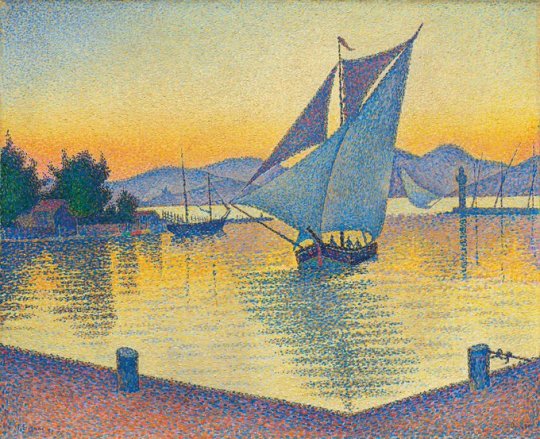
Held at the Museum Barberini in Potsdam, Germany:
Paul Signac, The Port at Sunset, Opus 236 (Saint-Tropez), 1892
Oil on canvas, 65 x 81,3 cm
Signed and dated lower left: P. Signac 92; inscribed lower right: Op 236
Inv.-no. MB-Sig-03
In 1892, Paul Signac transferred his yacht Olympia to Saint-Tropez, still an unassuming fishing village at the time, where he bought a house on the coast. He painted this composition there that same year. The application of the complementary colors violet and orange in tiny dots causes the picture to vibrate. Light is no longer featured as an atmosphere that surrounds an object but instead as stimulating particles. ~~ from the museum website.
#sunset#Paul Signac#port#impressionism#impressionist painter#Museum Barberini#SAP#art museum#Potsdam#Germany#Hasso Plattner#Saint-Tropez
1 note
·
View note
Text
1 note
·
View note
Text

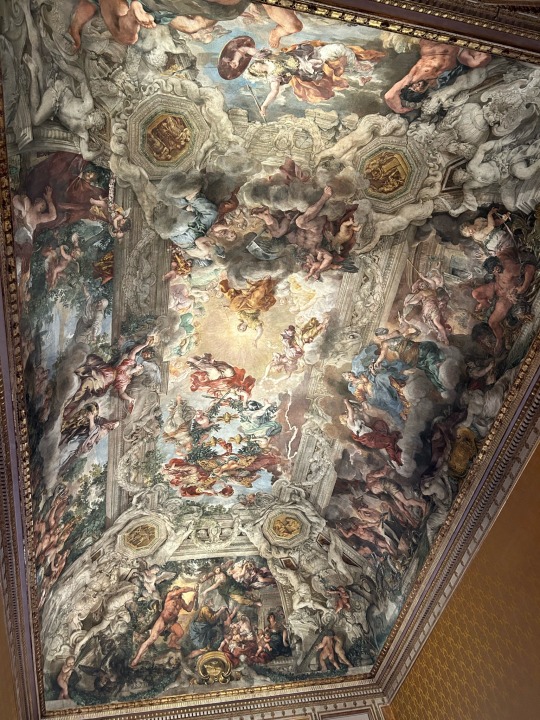
Palazzo Barberini, Rome
Feb 16, 2024
#palazzo#palazzo barberini#italia#italy#architecture#original photography#photography#travel#photographers on tumblr#lensblr#historical architecture#art history#museum#wanderingjana
14 notes
·
View notes
Photo

Barberini Faun, 220 BCE
Glyptothek, Munich
#barberini faun#glyptothek museum#glyptothek#munich#germany#europe#travel#travelling#museum#gallery#art#art history#220 bce#bce#my photos
15 notes
·
View notes
Video
A Spiral Colonnade by Henrik Sundholm Via Flickr: I saw this staircase inside the Palazzo Barberini in Rome, Italy.
#Palazzo Barberini#interior#architecture#colonnade#columns#staircase#spiral#window#hdr#museum#art museum#rome#roma#italy#italia#flickr
4 notes
·
View notes
Text










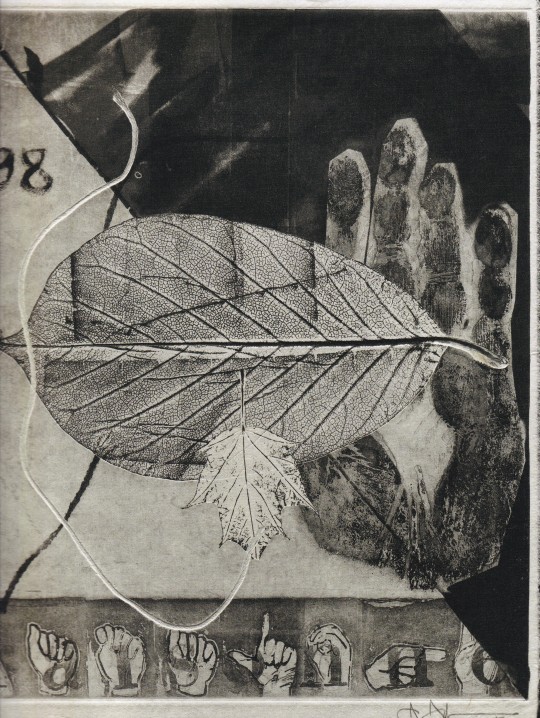

Jasper Johns The 100 Monotypes
edited by Ortrud Westheider, Michael Philipp
Prestel Verlag, München 2018, 128 pages, 24x30cm, ISBN 978-3-7913-596-2
euro 30,00
email if you want to buy [email protected]
exh.Museum Barberini, Postdam
Jasper Johns (b. 1930) is one of the leading artists of American Pop art. Well-known for his large-format paintings in bright, vibrant colors, he was also a prolific printmaker, and his graphic work puts the peintre-graveur on a par with Goya and Picasso. On the occasion of his 90th birthday on May 15, 2020, the Museum Barberini presented his most recent series, The 100 Monotypes
“Is it a flag, or is it a painting?” This was the question asked by the musician John Cage when Jasper Johns began to move abstract expressionism back to figuration in the 1950s by painting flags, numbers, targets, maps, and letters. Cage alluded to Johns’s blurring of the boundaries between reality and representation. Johns has also repeatedly addressed the dynamics of reproduction by experimenting with collage and repetition.
Since each print is unique, monotypes are more akin to painting than to printmaking. Reworking the same plates many times for The 100 Monotypes, Johns added an etched imprint of his hand and symbols of American Sign Language (ASL), as well as motifs that were important to him, such as string, stencils, and allusions to his own paintings and sculptures. The artist commented about this interaction in an interview: “I like to repeat an image in another medium to observe the play between the two: the image and the medium. In a sense, one does the same thing two ways and observes differences and sameness—the stress the image takes in different media. I can understand that someone else might find that boring and repetitious, but that’s not the way I see it. I enjoy working with such an idea.” Each monotype informs the next, thus forming part of a narrative chain that reflects Johns’s artistic practice as well as his oeuvre.
26/06/26
#Jasper Johns#100 monotypes#art exhibition catalogue#Museum Barberini Postdam 2018#fashionbooksmilano
0 notes
Text
Widewalls Magazine: Monet's Rediscovered Masterpiece, Le bassin aux nymphéas
Currently on exhibit at the Barberini Museum in Potsdam.
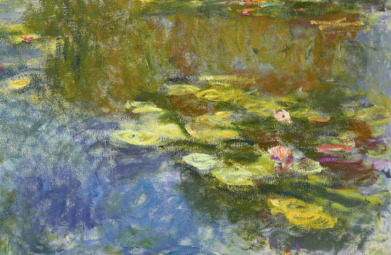
View On WordPress
1 note
·
View note
Text
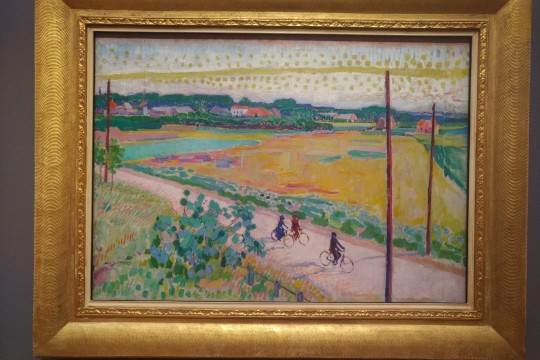
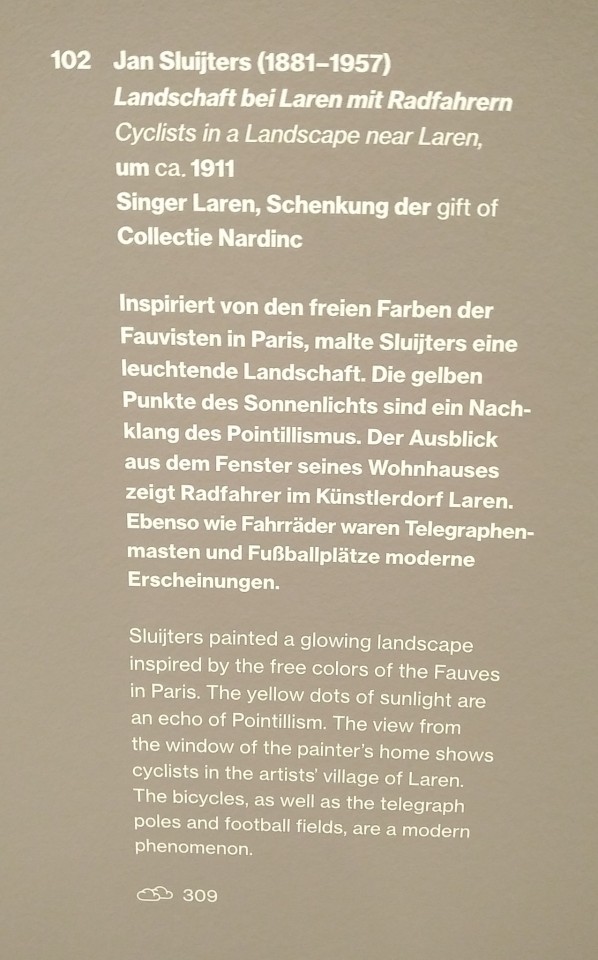
Man kann gerade noch so das Fußballfeld im Hintergrund erkennen ⚽🖌️🎨 Gemälde aus der Sonderausstellung Wolken und Licht aus dem Museum Barberini in Potsdam, wo ich heute war 😊
0 notes
Text


After 95(!) years and a solo exhibition at Alfred Flechtheim’s gallery in Düsseldorf Maurice de Vlaminck (1876-1958) finally receives a retrospective in Germany: with „Maurice de Vlaminck. Rebell der Moderne“ the Museum Barberini until January 12, 2025 presents a comprehensive overview of the painter’s oeuvre that comprises a total of 76 paintings.
The exhibition is accompanied by the present handsome catalogue published by Prestel that is warmly recommended to all those who can’t make it to Potsdam in time. Of course it contains all of the paintings included in the exhibition but also provides substantial information about de Vlaminck: in five essays experts and curators discuss the painter’s relationship with the Fauves as well as his Fauvist paintings, elucidate his reception of Vincent van Gogh’s art, his connection with Cézanne and Picasso and also shed light on Vlaminck’s use of pure colors straight from the tube.
What emerges from these essays is an artist as colorful as his paintings: a former bicycle racer, violinist, boxer and anarchist Vlaminck prided himself on never having attended an art academy and cultivated his image as a real „fauve“, a wild beast. The latter term dates back to the 1905 Salon d’Automne where Vlamincks paintings were exhibited alongside Henri Matisse’s, André Derain’s and Kees van Dongen’s: their powerful colors and focus on expression and emotion provoked the critic Louis Vauxcelles to call them „fauves“ and eventually made them examples also for the German expressionists. Vlaminck came to the use of pure color together with André Derain whom he met by chance in 1900 and with whom he explored the landscapes along the river Seine. Of course, and despite his own assertions, he was were well aware of the Impressionists/Neo-impressionists but transferred their motifs into the 20th century. Around 1908 Vlaminck gradually put behind Fauvism and began experimenting with cubist forms in a number of landscape paintings, portraits and seascapes, although in retrospect he dismissed Cubism. In parallel Cézanne became an important reference, especially in still lifes and landscapes. The latter also dominates Vlaminck’s late work, this time in the form of snowy forests and villages. To this day this late work has received only little attention, probably due to Vlaminck’s outspoken support of the Nazi art doctrines. The Potsdam exhibition and catalogue thus offer the rare chance to forge an opinion about these disputed works.
In view of the few German language publications on Vlaminck and the insightful essays as well as the countless illustrations the present catalogue is a highly recommended read and a great substitute for an exhibition visit!
23 notes
·
View notes
Text

#peoplematchingartworks#maurice de vlaminck#museum barberini#stefandraschan#photography#contemporaryart#potsdam
13 notes
·
View notes
Text

Samson
Artist: Valentin de Boulogne (French, 1591–1632)
Date: 1631
Medium: Oil on canvas
Collection: Metropolitan Museum of Art, New York City, NY, United States
Description
The Jewish hero Samson contemplates both his victory over the thousand Philistines he killed with a jawbone of an ass and the Philistine woman he loved and lost. As always, Valentin refuses the more conventional image, in this case of Samson triumphant. The bees buzzing around the lion’s pelt (a reference to another exploit of Samson’s) make allusion to the coat of arms of the Barberini family, as does the bee clasp. The picture was painted for Cardinal Francesco Barberini, who must have enjoyed the fact that Valentin cast himself as the Old Testament hero.
Samson Victory over the Philistines | Judges 16:21-31
#painting#christianity#oil on canvas#samson#jewish people#jewish hero#valentin de boulogne#french painter#jawbone#french art#17th century painting#christian art#holy bible#book of judges#bible scripture#old testmanet
17 notes
·
View notes
Text


















Jiří Kolář
Gerwald Sonnberger, Egon Schiele Centrum Český Ktumlov
Galleria Nazionale d'Arte Antica Palazzo Barberini, Roma 1998 , 140 pages, 21x29,5cm,
euro 80,00
email if you want to buy [email protected]
Mostra Galleria Nazionale d'Arte Antica Palazzo Barberini Roma 21 maggio-28 giugno 1998 nell'ambito della mostra Jiří Kolář e il Collage Ceco
Jiří Kolář nasce nel 1914 a Protivín in Boemia. Nel 1922 si trasferisce a Kladno vicino a Praga. Dopo un’adolescenza caratterizzata da lavori fortuiti, a sedici anni scopre l’edizione ceca di “Les mots en liberté futuristes” di Filippo Tommaso Marinetti, che lo conduce nel mondo della poesia moderna, fondamentale per la sua futura ricerca artistica. Grazie all’incontro con il Surrealismo inizia a lavorare con la tecnica del collage. Nel 1937 espone per la prima volta al Mozarteum di Praga. Nel 1941, durante l’occupazione tedesca, esce la sua prima raccolta di poesie e l’anno seguente fonda il “Gruppo 42” insieme ad altri artisti. Tra il 1946 e il 1948 compie alcuni viaggi a Parigi, in Germania e in Gran Bretagna e qualche anno dopo esce Il Fegato di Prometeo (1952) nel quale, unendo le immagini alla poesia e alla prosa, denuncia la drammatica situazione cecoslovacca dopo l’avvento del regime comunista; una dura verità che insieme ad altri scritti gli costa il carcere per nove mesi e il divieto di pubblicazione fino al 1964. Verso la fine degli anni Sessanta espone in Germania e in Brasile dove nel 1969 è premiato alla X Biennale di San Paolo quindi in Canada e in Giappone. Nel ‘75, nel ‘78 e nell‘85 il Solomon R. Guggenheim Museum di New York gli dedica tre importanti mostre personali (Kolář e Picasso sono gli unici artisti che, da viventi, hanno avuto l’onore di tre mostre personali presso il Guggenheim di New York). Seguiranno molte altre esposizioni in tutto il mondo. Nel 1983 conclude il “Dizionario dei metodi”, una raccolta con tutte le tecniche utilizzate per la realizzazione delle sue opere: collage, ventilages, chiasmages, confrontages, etc. Le sue opere sono presenti nei maggiori musei del mondo. Nel 1991 riceve il Premio Seifert e viene nominato cittadino onorario di Praga, dove muore nell’agosto del 2002.
É del 2012 un’importante retrospettiva presso il MOCAK di Cracovia, mentre nel 2014 si è tenuta una mostra antologica presso la Kunstforum Ostdeutsche Galerie di Regensburg, in Germania ed una mostra-tributo in onore del centenario della nascita dell’artista (September 23, 2014 – February 8, 2015) presso il Museum Kampa di Praga.
L’anno successivo una mostra antologica con più di 160 lavori gli è stata dedicata a Prato presso la Galleria Open Art ed il museo di Pittura Murale di San Domenico.
14/12/24
5 notes
·
View notes
Text
1 note
·
View note
Text

Francesco Rustici called Il Rustichino, 1592-1626
Salome with the head of John the Baptist, n/d, oil on canvas, 124.5x161 cm
Private Collection
*Without the cross and scroll placed next to the shackles and chain of the saint’s imprisonment, the image might be mistaken for a Judith with the Head of Holofernes. The painting is striking for the elegance of the life-size figures, the complementary tones of Salome’s red cloak and the golden-brown fabric covering the Baptist’s severed head, and the description of light on the faces of the two women as they emerge from the penumbra. The dramatic effect of the Gospel narrative (Matthew 14:1-12, Mark 6:14-27) is further enhanced by the dialogue and knowing look exchanged by Salome and her maidservant.
The theme was treated by Rustici on several occasions, and this canvas was no doubt executed during his second Roman sojourn, in about 1624-1625, when he produced a painting of similar size and subject for Cardinal Lorenzo Magalotti, a native of Florence.1 Magalotti was created cardinal by Pope Urban VIII (Maffeo Barberini) in the consistory of 7 October 1624. (Galleria Canesso)
** There is another version (with minor differences) at the Museum of Fine Arts, Budapest.
7 notes
·
View notes